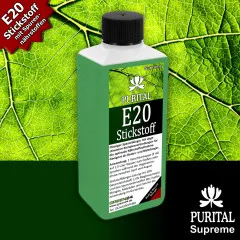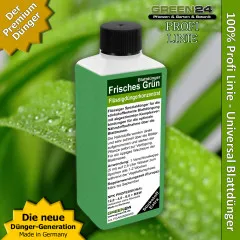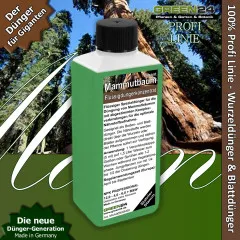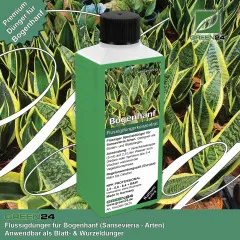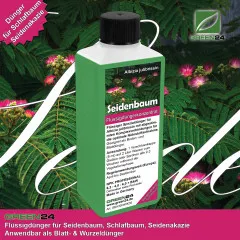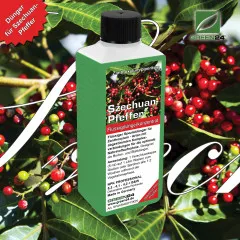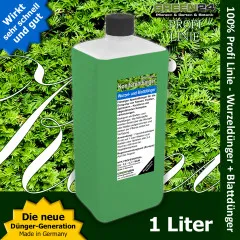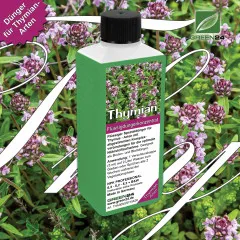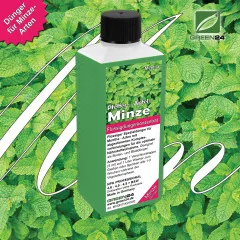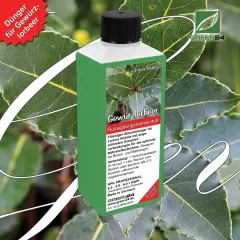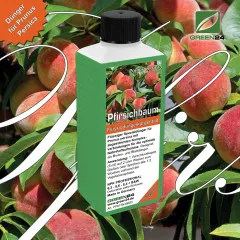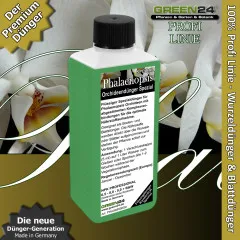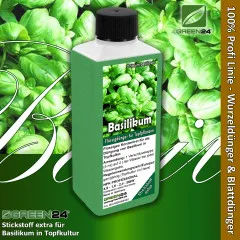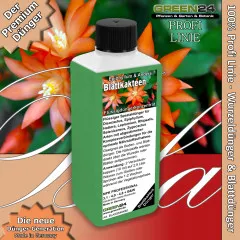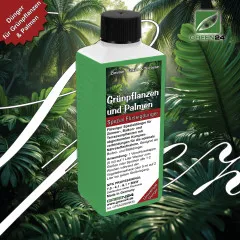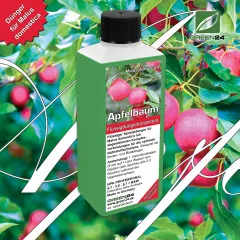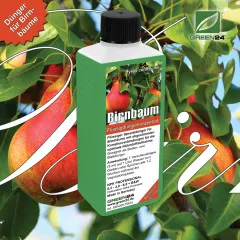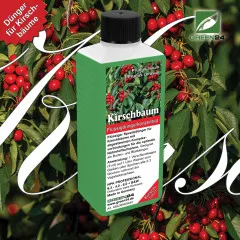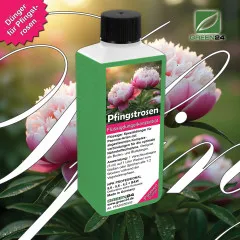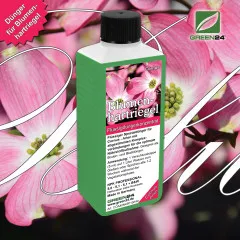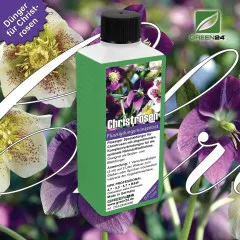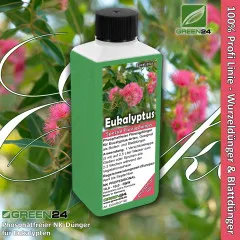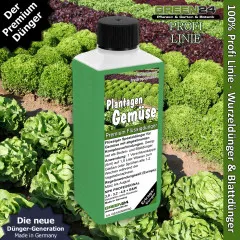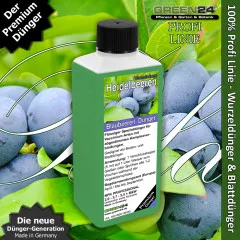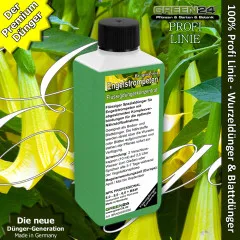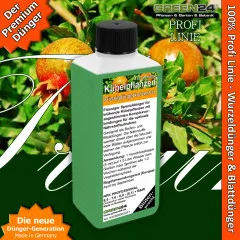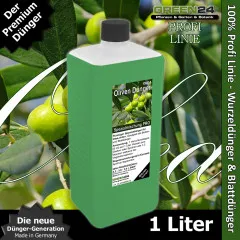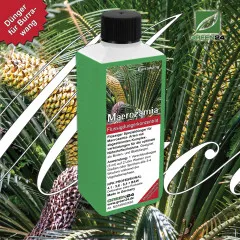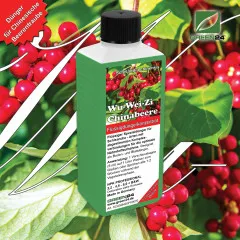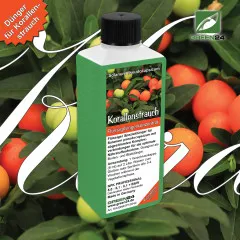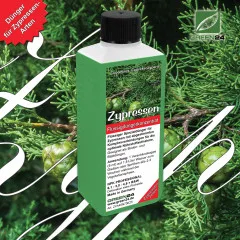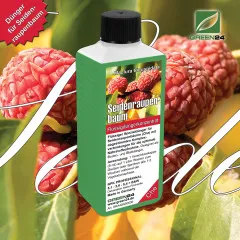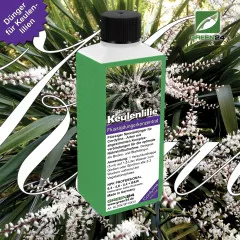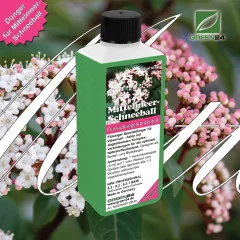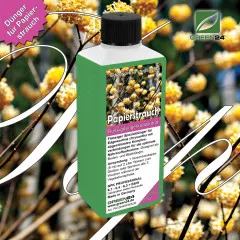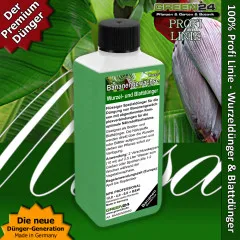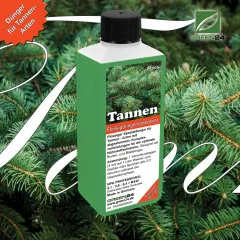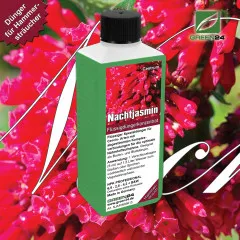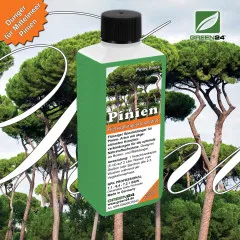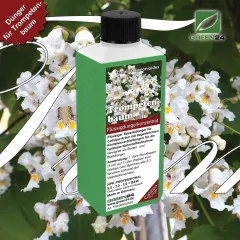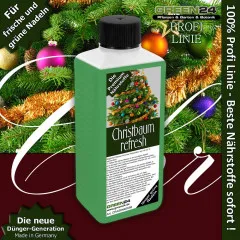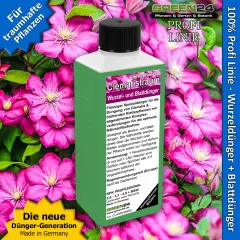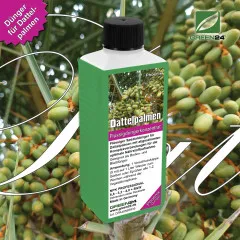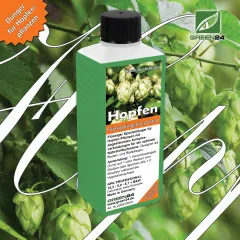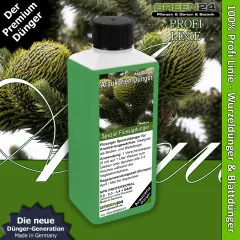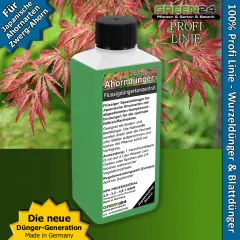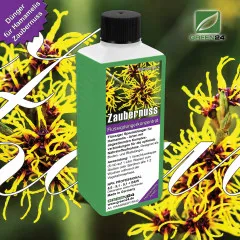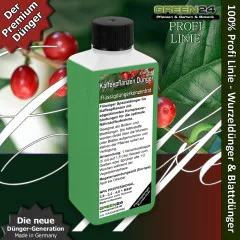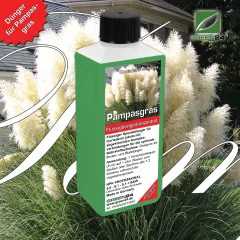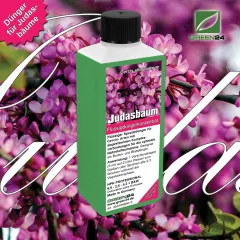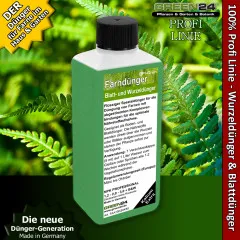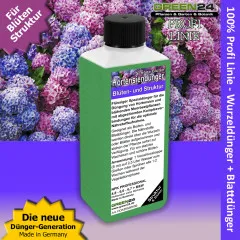Hydrangea Success: GREEN24 Specialized Fertilizer for Hydrangea & Acid-Loving Plants
Successful cultivation of hydrangeas requires special knowledge about the needs of these spectacular flowering shrubs. Hydrangeas, as acid-loving moorland plants, have completely different nutrient requirements than normal garden plants and need particularly balanced care with trace nutrients for abundant flower formation. Our Hydrangea Fertilizer is specifically tailored to the needs of Hydrangea and related acid-loving plants and offers professional hydrangea technology for maximum success.
Plant Profile: Hydrangeas & Acid-Loving Plants
- Hydrangeas:
- Botanical Name: Hydrangea macrophylla, Hydrangea paniculata, Hydrangea arborescens
- Family: Hydrangeaceae (Hydrangea family)
- Origin: East Asia, North America
- Growth form: Deciduous shrubs, 1-4m tall
- Flowering time: June to October (depending on variety)
- Flower colors: White, pink, blue, red, violet
- Special features: pH-dependent flower color, spectacular flower balls
- Popular Hydrangea Species:
- Bigleaf Hydrangea (Hydrangea macrophylla):
- Classic garden hydrangea with large flower balls
- pH-dependent flower color (acidic=blue, alkaline=pink)
- Flowering time June to September
- Ideal for containers and beds
- Panicle Hydrangea (Hydrangea paniculata):
- Cone-shaped flower panicles - Very winter hardy
- Flower color white to pink, independent of pH value
- Flowering time July to October
- Also available as standard tree
- Smooth Hydrangea (Hydrangea arborescens):
- Large white flower balls - Very robust
- Blooms on annual shoots
- Flowering time June to September
- Tolerates severe pruning
- Climbing Hydrangea (Hydrangea petiolaris):
- Self-clinging climbing plant - White umbel flowers
- Very shade tolerant
- Flowering time June to July
- Ideal for house walls and fences
- Mountain Hydrangea (Hydrangea serrata):
- Flat umbel flowers with marginal flowers
- Compact growth, very winter hardy
- Autumn coloration of leaves
- Ideal for small gardens
- Bigleaf Hydrangea (Hydrangea macrophylla):
- Related Acid-Loving Plants:
- Rhododendron: Evergreen and deciduous species
- Azaleas: Deciduous rhododendron species
- Camellias: Evergreen flowering shrubs
- Pieris: Lily-of-the-valley shrub with bell flowers
- Blueberries: Utility and ornamental plants
- Heathers: Heath species
- Growth phases:
- Sprouting (March-April)
- Main growth (May-July)
- Flowering period (June-October, depending on species)
- Autumn coloration (October-November)
- Winter dormancy (November-February)
- Critical factors: Soil pH value, iron deficiency, waterlogging, drought, lime content
- Common problems: Chlorosis, weak flowering, leaf margin necrosis, wilting
- Cultural significance: Symbol of gratitude, understanding and warmth
The Science of Hydrangea Nutrition
The Hydrangea Specialized Fertilizer Formula "Flowers and Structure"
Hydrangeas, as acid-loving moorland plants, have special nutrient requirements for optimal flower formation:
- Nitrogen (N) for vigorous growth: Promotes the formation of rich green leaves and strong shoots. Balanced for healthy growth without over-fertilization.
- Phosphorus (P) for flower abundance: Intensively stimulates flower bud formation and ensures abundant, long-lasting flower balls. Phosphorus is the key to spectacular hydrangea blooms.
- Potassium (K) for stability: Strengthens cell structure and increases resistance to drought and diseases. Potassium makes hydrangeas robust and winter hardy.
- Iron (Fe) against chlorosis: Prevents iron deficiency chlorosis (yellowing) of leaves and ensures rich green coloration. Particularly important for acid-loving plants.
- Magnesium (Mg) for chlorophyll: Central atom of chlorophyll, important for rich green leaves and optimal photosynthesis.
- Calcium (Ca) for cell stability: Important for stable cell walls, but controlled dosage to avoid raising pH value.
- Manganese (Mn) for enzyme activity: Important for photosynthesis and metabolic processes, prevents manganese deficiency chlorosis.
- Boron (B) for flower quality: Essential for flower formation and cell wall construction, significantly improves flower quality.
- Trace element complex: Complete spectrum of all important micronutrients for optimal plant health.
- Complex compounds: Chelated nutrients for optimal uptake even at unfavorable pH values.
- pH buffer system: Stabilizes the acidic pH range for optimal nutrient availability.
Application: Professional Hydrangea Care
Root Fertilization (Main Application)
Based on product information: "Liquid fertilizer for watering"
- Timing: Throughout the entire growing season (April-September)
- Frequency: Every 1-2 weeks during main growth period
- Dosage: 1 closure cap (5ml) to 2.5 liters of water
- Application: As watering solution directly to the roots of hydrangeas
- Advantage: Basic supply with all important nutrients for strong growth
- Special feature: Optimal uptake through the shallow root system
Foliar Spraying (Quick Nutrient Correction)
Based on product information: "Liquid fertilizer for spraying"
- Dosage: 1 closure cap (5ml) to 2.5 liters of water
- Application: Spraying leaves under overcast skies
- Frequency: Every 1-2 weeks or with deficiency symptoms
- Optimal times: Early morning hours or late evening hours
- Particularly effective: With iron deficiency (chlorosis) or after stress
- Additional benefit: Quick iron uptake through large leaf surfaces
Combined Application (Maximum Flowering Splendor)
Based on product advantage: "Fast availability through complex compounds"
- Basic supply: Regular root fertilization for basic nutrients
- Flower stimulation: Additional foliar spraying before and during flowering time
- Problem treatment: Intensive application with chlorosis or weak flowering
- Container plants: Intensive fertilization for limited substrate quantity
Care Guide for Successful Hydrangea Culture
Optimal Hydrangea Conditions
- Location: Partially shaded to shaded, protected from hot midday sun
- Soil: Humus-rich, evenly moist, well-draining
- pH value: Acidic to slightly acidic (pH 4.5-6.5)
- Watering: Evenly moist, especially during flowering time
- Humidity: Increased humidity preferred
- Winter protection: Winter hardiness varies by species
Hydrangea Equipment and Methods
- Mulch: Organic mulch for moisture retention
- Irrigation: Drip hoses or watering cans with soft water
- Pruning tools: Sharp garden shears for variety-appropriate pruning
- pH meter: Control of soil pH value
- Winter protection: Fleece or leaves for sensitive varieties
Special Features of Hydrangea Culture and Their Application
Professional Hydrangea Techniques
- pH value management: Control of flower color through pH adjustment
- Variety-appropriate pruning: Different pruning times depending on species
- Flower color control: Aluminum for blue flowers
- Overwintering: Protection from late frosts
Variety-Specific Application
Based on different hydrangea species
- Bigleaf hydrangeas: Careful fertilization, observe pH value
- Panicle hydrangeas: Intensive fertilization for large flower panicles
- Smooth hydrangeas: Regular fertilization for continuous flowering
- Climbing hydrangeas: Adapted fertilization for climbing growth
Seasonal Hydrangea Care
- Spring (March-May): Promote sprouting, begin intensive fertilization
- Summer (June-August): Main flowering time, regular fertilization and watering
- Autumn (September-November): Reduce fertilization, winter preparation
- Winter (December-February): Stop fertilization, winter protection
Problem Solving Through Targeted Nutrient Supply
Common Hydrangea Problems and Their Solutions
- Chlorosis (yellow leaves): Iron deficiency → Immediate foliar spraying with iron-containing fertilizer
- Weak flowering: Nutrient deficiency → Enhanced phosphorus fertilization
- Brown leaf margins: Drought or salt stress → Even watering, reduce fertilization
- Small flowers: Nutrient or water deficiency → Intensive fertilization and watering
- Wilted leaves: Water shortage or root problems → Optimize irrigation
- Poor winter hardiness: Potassium deficiency → Potassium-rich autumn fertilization
Effects of Optimal Fertilization (from Customer Experience)
- Spectacular flower increase: "From 6 flowers to 24 flowers" - Quadrupling of flower number
- Flower quality: "Rich colors, healthy appearance" with different hydrangea species
- Growth: "Significantly more flowers and lusher green than in previous years"
- Leaf health: "Healthy, glossy foliage" after regular fertilization
- Long-term effect: "Bloomed for a very long time" - extended flowering duration
- Stress resistance: Successful recovery after winter neglect
- Customer satisfaction: "A miracle cure" - "Simply amazing"
Modern Hydrangea Technology
Container Culture (Popular Application)
- Substrate adaptation: Acidic special soil for moorland plants
- Drainage system: Prevents waterlogging in containers
- Intensive fertilization: Higher nutrient requirement due to limited substrate
- Winter protection: Protection of roots from freezing through
Garden Integration (Natural Culture)
- Moorland bed creation: Special soil preparation for acid-loving plants
- Mixed plantings: Combination with other acid-loving plants
- Site optimization: Partially shaded to shaded areas
- Water management: Even moisture without waterlogging
Cut Flower Production (Professional Use)
- Intensive fertilization: For large, durable flower heads
- Harvest timing: Optimal cutting time for durability
- Post-treatment: Conditioning for vase life
- Variety selection: Special cut flower varieties
Metabolism Optimization for Hydrangeas
Photosynthesis Support
- Chlorophyll formation: Magnesium and iron for rich green leaves
- Light utilization: Optimal nutrient supply for partial shade locations
- CO2 fixation: Support of carbon assimilation
Flower Formation Promotion
- Phosphorus supply: Essential for spectacular flower balls
- Boron supply: Important for flower quality and size
- Potassium balance: For intense flower colors and durability
pH Value Adaptation
- Acidic pH range: Optimal nutrient availability at pH 4.5-6.5
- Iron availability: Prevents lime chlorosis
- Aluminum uptake: For blue flower colors in bigleaf hydrangeas
Integration of Product Image Information
GREEN24 Hydrangea Specialized Fertilizer "Flowers and Structure"
Based on product image text and NPK-Professional formula
- Special formulation: Flowers and Structure formula for optimal flower formation
- Moorland plant suitable: Also for other acid-loving plants
- Complex compounds: Coordinated nutrient complexes for optimal uptake
- Immediate availability: Nutrients are immediately available to the plant
- NPK Professional: 6-7-6 + B&W 4.8-6.0 for professional results
GREEN24 Quality Standard
Based on product image branding and customer experience
- Professional quality: NPK Professional formula
- Consistent results: Consistent quality in every batch
- Scientifically based: Specially developed for hydrangeas and acid-loving plants
- Field-tested: Proven through spectacular customer successes
Mandatory Application Instructions
- Information sheet 130405 must be observed! You can find this at the URL https://www.green24.de/NPK.pdf
- Always observe the label!
- Do not apply undiluted.
- Shake well before use.
- Only apply during the growing season.
Safety Instructions
- Avoid contact with eyes, skin and clothing.
- Do not inhale spray and spray mist.
- Keep away from food and beverages.
- Wash face and hands thoroughly after use.
- Recommendations from official advisory services take precedence.
- Fertilizers may leave stains on surfaces that may not be removable.
Storage
- Store dry, dark at +8 °C to +40 °C.
- Keep out of reach of children and animals.
- Fertilizer must not be introduced into water bodies or reach sewage systems.
- With proper storage, shelf life of several years without loss of quality.
- Use diluted fertilizer promptly.

